Dogs are known for their love of food, but sometimes they exhibit strange eating behaviors that can leave their owners puzzled and concerned. While some of these behaviors may be harmless quirks, others could indicate underlying health issues or behavioral problems that require attention.
This article will explore 30 strange dog-eating behaviors and what they could mean. From eating non-food items to refusing to eat altogether, we will explore the potential reasons behind these behaviors and provide insights into when to seek veterinary help.
Whether you’re a seasoned dog owner or a new pet parent, understanding these unusual eating habits can help you better care for your furry friend’s overall well-being.
As a German Shepherd owner, I can relate to this topic as my dog certainly performs one or two of these strange dog-eating behaviors. I’ll let you know exactly which ones as we dive into the post!
Let’s get started!
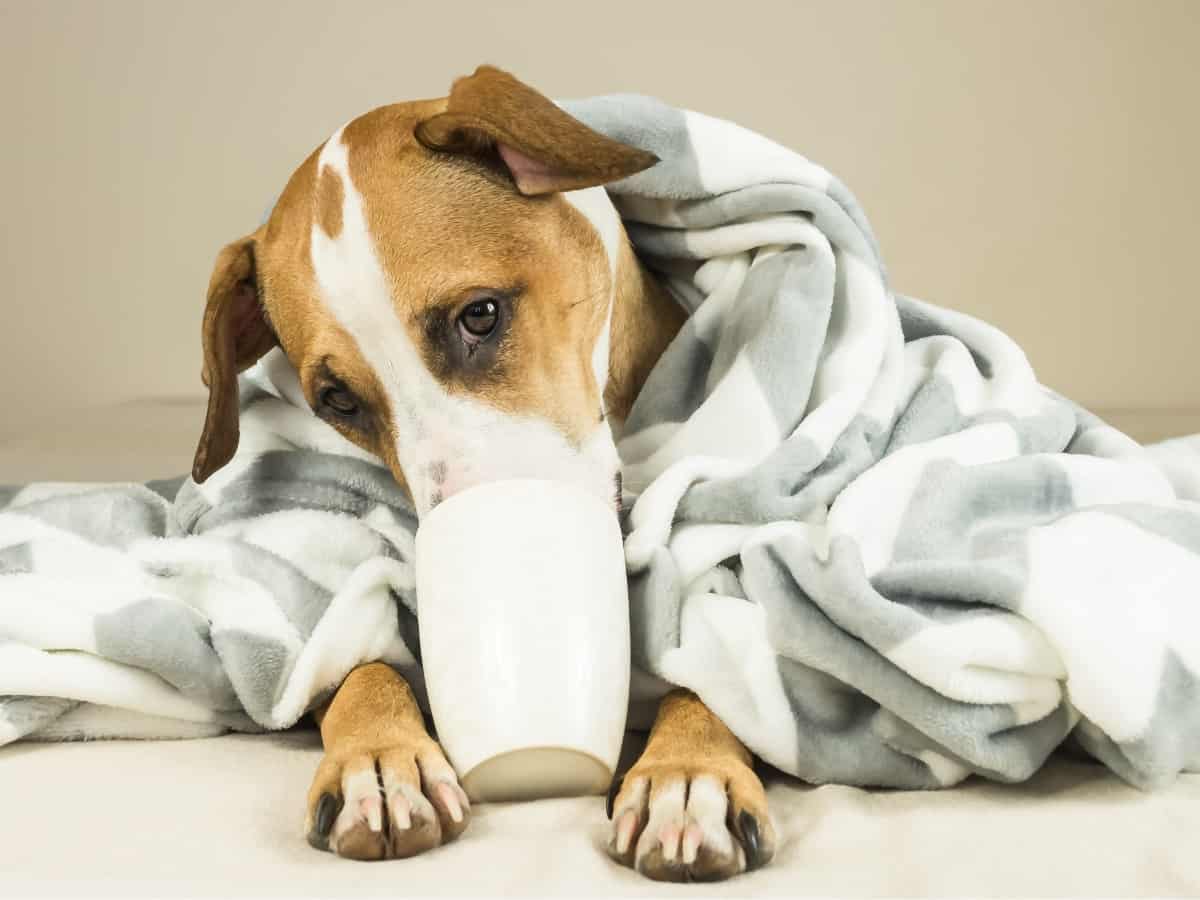
Why Is My Dog Suddenly A Messy Eater?
Dogs can be messy eaters, but if your pet suddenly starts making a bigger mess than usual while eating, there could be an underlying reason. One possible explanation is that your dog may be experiencing dental issues, such as tooth decay or gum disease.
These conditions can cause pain or discomfort while chewing, leading your dog to drop food or eat less neatly than usual. Another potential cause of messy eating is a change in your dog’s feeding routine or environment.
Suppose you’ve recently switched your pet’s food, changed feeding times or locations, or introduced new distractions into the feeding area. In that case, your dog may adjust to the new situation and struggle to eat tidily.
If you have other pets, your dog may feel more competitive for food or try to eat faster to avoid stealing their food. A third possible explanation for a suddenly messy eater is anxiety or stress.
Dogs can experience various emotions and may become anxious or agitated for multiple reasons, including changes in their routine, unfamiliar people or animals, or other environmental stressors.
This can lead to pacing, restlessness, and a lack of focus, resulting in more mess and less efficient eating habits.
Why Is My Dog Eating Rocks And Grass?
Dogs are known to eat grass and rocks, and the reasons behind this behavior can vary. Some dogs may eat grass or rocks out of boredom, while others may do it because they have a nutritional deficiency.
Eating grass or rocks can also indicate an underlying medical condition, such as gastrointestinal issues or dental problems. If a dog ingests many rocks or other non-food items, it can lead to intestinal blockage, which can be a serious health issue.
Sometimes, dogs may eat grass or rocks simply because they like the taste or texture. This behavior can be discouraged by providing plenty of safe and appropriate chew toys, playing with your dog regularly, and ensuring that they have a balanced diet.
If the behavior persists or the dog shows other signs of illness, it is essential to consult a veterinarian to rule out any underlying health issues.
Learn Why Dogs Eat Grass In This Video…
Why Is My Dog Eating Other Dogs Poo?
Ah, the age-old question that has puzzled dog owners for centuries – why on earth do dogs eat other dogs’ poo? As gross as it may seem to humans, it’s a pretty common behavior for dogs.
Your furry friend might be chowing down on some questionable cuisine for several reasons. One theory is that your dog is simply curious and exploring their environment with their mouth.
They may see another dog’s poo and think, “Hey, what’s this?” before quickly tasting it. Another reason is that your pup may lack certain nutrients in its diet, leading them to seek other sources of nutrition (even if those sources are not so tasty to us).
And, of course, there’s always the possibility that your dog has some weird tastes – after all, they love licking their butts! So, let’s just chalk it up to dogs being dogs and hope that they don’t decide to give us a “kiss” after their poop feast.
Why Is My Dog Eating Socks And Shoes?
Dogs are notorious for chewing things they shouldn’t, including socks and shoes. This behavior can be frustrating for pet owners and dangerous for dogs if they swallow pieces of the items they are chewing on.
One possible explanation for this behavior is that dogs chew on socks and shoes to seek attention or stimulation. If your dog is not getting enough exercise or mental stimulation, it may turn to chewing on objects, including socks and shoes, to relieve boredom or anxiety.
Another potential reason for a dog chewing on socks and shoes is separation anxiety. If your dog experiences distress when left alone, it may turn to chewing on objects to cope with its emotions.
Chewing can be a self-soothing behavior for dogs and help alleviate their anxiety when feeling overwhelmed. It’s important to provide your dog with plenty of opportunities for exercise and mental stimulation and to work on desensitizing them to being alone to help reduce their sock and shoe-chewing behavior.
Why Is My Dog Eating Laying Down?
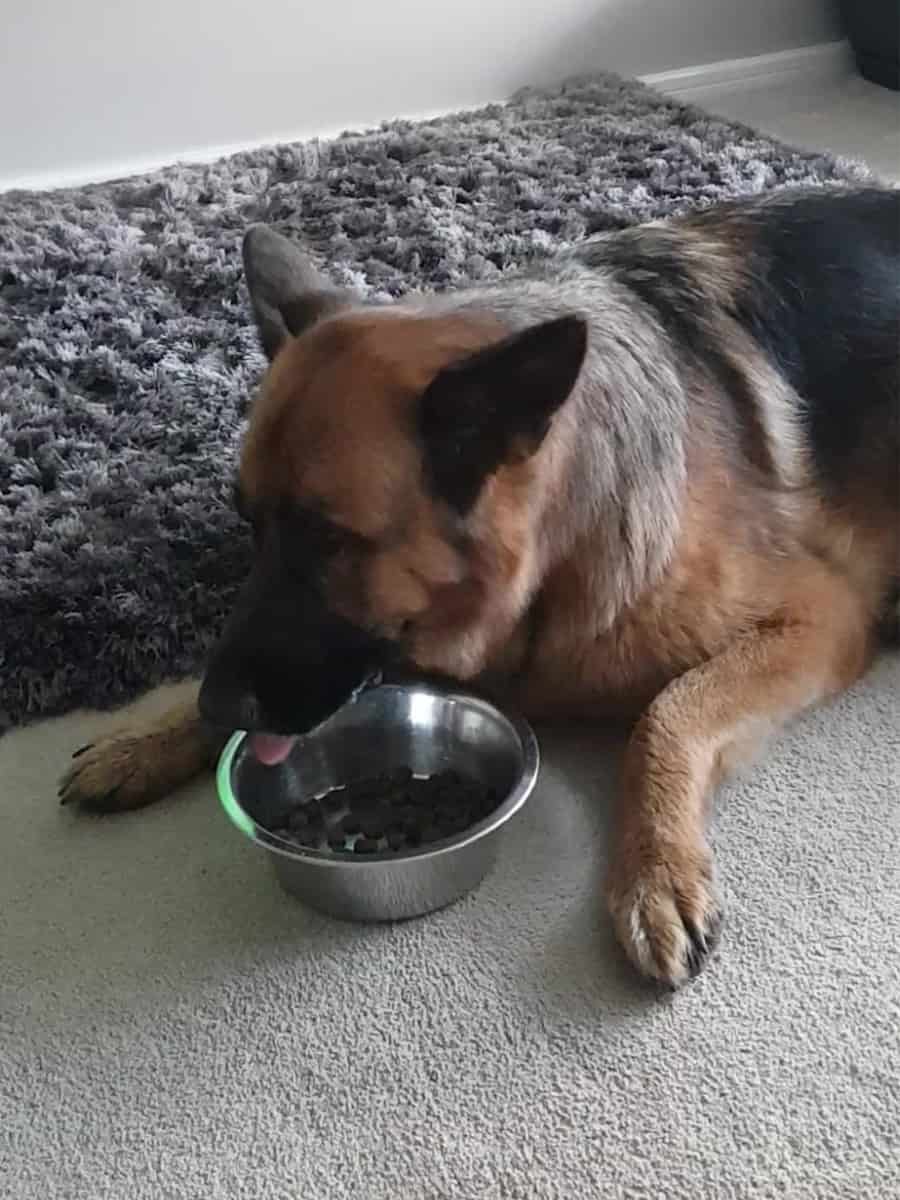
If you’ve noticed your dog eating while lying down, you may wonder what this behavior means. There are several potential reasons why a dog may eat while lying down.
One explanation is that your dog is experiencing pain or discomfort while standing up, making it more comfortable for them to eat while lying down. This may be especially common in older dogs with arthritis or other mobility issues.
“My German Shepherd often eats while laying down. She is a senior dog with arthritis and feels more comfortable eating this way.”
Another potential reason why dogs may eat while lying down is that they are simply more comfortable in that position. Eating while lying down can relax and make dogs feel more secure in their environment.
Also, dogs may find it easier to eat while lying down if they have certain types of dental problems or mouth injuries that make it difficult to eat while standing up.
It’s important to monitor your dog’s eating habits and consult a veterinarian if you notice any changes or unusual behavior.
Why Is My Dog Eating Slowly?
Well, sometimes, it’s good to take things slow. And that’s exactly what your dog might do if they eat slowly. But if you’re concerned about this behavior change, there may be more to it than just savoring the flavor of their kibble.
Eating slowly can be a sign of dental problems or pain, so it’s important to watch your pup and take them to the vet if you notice any other problematic behaviors. On the other hand, your dog might be trying to impress their date by showing off their sophisticated palate!
They may be channeling their inner food critic and taking the time to savor each bite. Or perhaps they’re simply trying to avoid the inevitable food coma from eating too quickly.
Whatever the reason, monitor your dog’s eating habits and ensure they get the nutrients necessary to stay healthy.
Why Is My Dog Eating Too Quickly and Choking?
If your dog is eating too quickly and choking, it could be a sign that they’re not chewing its food properly before swallowing. This can be dangerous as larger pieces of food can get lodged in their throat, causing choking or even more severe issues.
Eating too quickly can also lead to other health issues, such as obesity or digestive problems. Your dog is eating too quickly because they feel like competing with other dogs or are afraid you will take its food away.
Consider feeding your dog in a separate room or at a different time than any other dogs in the household to help reduce the feeling of competition. Another solution is to use a slow feeder bowl with ridges or obstacles that require your dog to eat more slowly and work for its food.
I recommend the Outward Hound Fun Slow Feeder Dog Bowl from Amazon. It does the job perfectly with its funky design. But if the crazy color isn’t your thing, you can choose multiple colors, ridge patterns, and sizes.
Slow feeders are fun and can help prevent choking and encourage your furry friend to take their time while eating. So, let’s help your pup slow down and savor their mealtime!
Why Is My Dog Drinking A Lot Of Water?
Drinking a lot of water could be a sign of several different things. One potential reason for increased water consumption is that your dog is thirsty due to exercise, heat, or other environmental factors.
However, if your dog drinks significantly more water than usual, it may indicate an underlying medical condition. One common medical condition that can cause increased water consumption is diabetes.
Dogs with diabetes may experience increased thirst, urination, and other symptoms such as weight loss and lethargy.
Other potential causes of increased thirst in dogs include kidney disease, liver disease, and certain medications. If you notice that your dog is drinking a lot of water, it’s important to monitor their behavior and note any other symptoms it may be experiencing.
It’s also a good idea to schedule a veterinary exam to determine the underlying cause and develop a treatment plan.
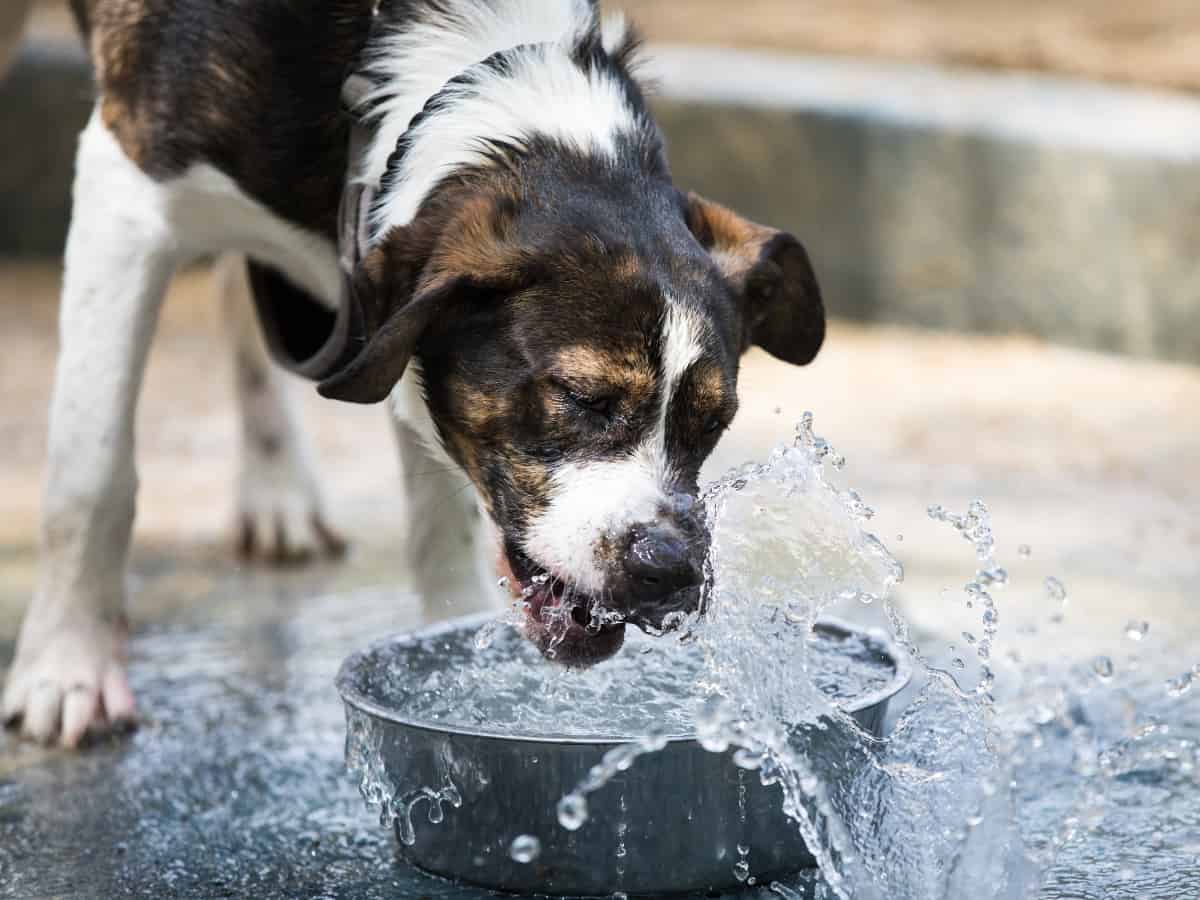
Why Does My Dog Eat A Little Then Walks Away?
If your dog frequently eats a little bit of their food before walking away, it could be a sign of a few different things. One reason is that your dog is experiencing nausea or stomach discomfort, which can cause them to lose its appetite or feel full after just a few bites.
This could be due to an underlying medical condition, something as simple as eating too quickly, or something that doesn’t agree with their stomach. Another potential explanation for this behavior is that your dog is not hungry.
Dogs may have fluctuations in their appetite based on several factors, such as changes in their routine or environment, changes in their activity level, or even changes in the weather.
If your dog is eating a little bit and then walking away, observing their behavior and looking for other signs of illness or discomfort is important.
However, the true answer to this unusual eating behavior likely stems from pack mentality and is simply your dog’s evolutionary instinct taking over. So, before dogs were domesticated, after making a kill, they’d drag pieces of food away to avoid having to fight a more dominant dog in the pack or the leader.
Why Does My Dog Back Away From His Food Bowl?
One potential explanation is that your dog is experiencing pain or discomfort while eating. This could be due to dental issues, such as gum disease, a tooth abscess, or a sign of an underlying medical condition causing discomfort in the digestive tract.
If your dog is showing other symptoms of illness, such as vomiting or diarrhea, it’s important to schedule a veterinary exam to determine the cause and develop a treatment plan.
Another potential explanation for this unusual behavior is your dog is experiencing anxiety or stress. Some dogs may feel uncomfortable eating in certain environments, or they may be anxious about being interrupted while they eat.
If you suspect that your dog’s backing away from its food bowl is related to anxiety, it’s vital to address the underlying cause and create a calm, stress-free environment for your dog to eat in.
This may involve feeding your best friend in a different location or creating a routine around meal times to help your dog feel more comfortable and secure.
Why Is My Dog Bobbing His Head Around His Food Bowl?
Well, it sounds like your furry friend is having a bit of a dance party while chowing down! If your dog is bobbing their head around their food bowl, it could be a sign of excitement or anticipation.
Some dogs get so excited about mealtime that they can’t help but dance around while eating. On the other hand, if your dog is bobbing their head around their food bowl and not eating, it could be a sign of anxiety or stress.
“Your pup may feel uncomfortable or intimidated by their food bowl or environment and may be trying to work up the courage to eat.”
If this is the case, it’s essential to ensure that your dog has a safe, calm environment to eat in and that they’re not feeling threatened or stressed during mealtime.
You may also want to consider offering your pup smaller, more frequent meals to help reduce their anxiety. So, let’s help your pup dance their way to a happy, healthy mealtime!
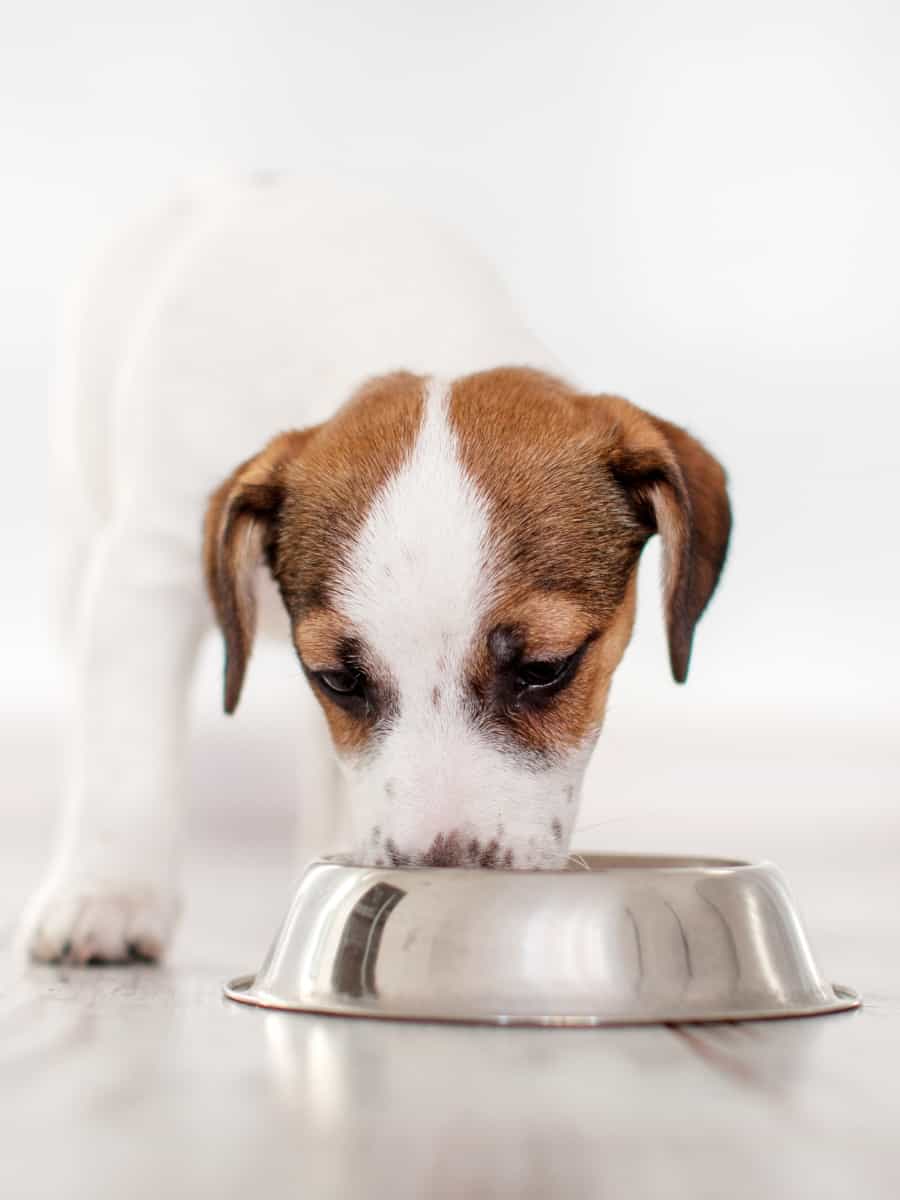
Why Is My Dog Throwing Up After Eating?
Uh oh, it seems like your furry friend is having some tummy troubles! If your dog is throwing up after eating, it could indicate a few issues.
One likelihood is that your pup is eating too quickly or overeating, which can cause them to regurgitate their food shortly after eating. Another possibility is that your dog has a food allergy or intolerance, which can cause vomiting, diarrhea, and other digestive issues.
However, if your dog consistently throws up after eating, it could indicate a more serious issue, such as pancreatitis or inflammatory bowel disease.
If this is the case, you should schedule a visit with your veterinarian to rule out any medical issues and ensure that your furry friend receives the proper care. So, let’s get your pup feeling better and back to its usual rambunctious self!
Why Does My Dog Eat His And Other Dog’s Vomit?
It sounds like your furry friend has a strange culinary taste! If your dog is eating their own vomit or the vomit of other dogs, don’t worry, they’re not the only ones.
As gross as it may seem to humans, dogs are instinctive to scavenge and eat things that may not be the most delicious to our palates. But why, oh why, would a dog eat vomit, you may ask?
Some experts believe it could be because the vomit still contains some undigested food from their previous meal, and dogs are opportunistic eaters who will take any chance to fill their bellies.
Or, it could be that the smell and taste of the vomit are just too tempting for your furry friend to resist. While it may seem revolting, it’s just another day in a dog’s life!
Why Does My Dog Eat And Growl At Food?
If your dog is eating and growling at their food, it could be a sign of food aggression.
This means that your dog sees their food as a valuable resource that needs to be protected, and it may become defensive or even aggressive if they feel like someone or something is trying to take it away.
Food aggression can be serious, especially if your pup’s behavior gets more intense over time. It’s vital to address this issue immediately to keep your dog and the people around them safe.
You may want to consider working with a professional dog trainer or behaviorist to help your furry friend learn to share their food and reduce their aggressive tendencies.
It’s also important to make sure that your dog has their own space to eat in peace and that they’re not feeling threatened or stressed during mealtime. So, let’s help your pup learn to share culinary love!
Watch This Dog’s Food Guarding Behavior…
Why Is My Dog Begging for Food All The Time?
Well, well, well, it seems like we have a little beggar on our hands! I know how tempting it can be to give in to those puppy dog eyes, but constant begging for food is not a behavior you want to encourage in your furry friend.
First of all, let’s consider if your dog is actually hungry or if they just want attention. Dogs are social animals and crave interaction with their human pack members. If your pup is bored or lonely, it may beg for food to get your attention.
So, ensure you provide plenty of mental and physical stimulation for your dog throughout the day. If your dog’s begging seems persistent, it could indicate further investigation by a vet, similar to food-stealing behavior.
Certain medical conditions, such as hypothyroidism or Cushing’s disease, can cause an increase in appetite and lead to constant begging. So, checking in with your vet is always a good idea to rule out potential health issues.
But, in the meantime, remember to resist those puppy dog eyes and stick to a healthy feeding routine for your furry friend. And who knows, maybe you can train your dog to bring snacks instead!
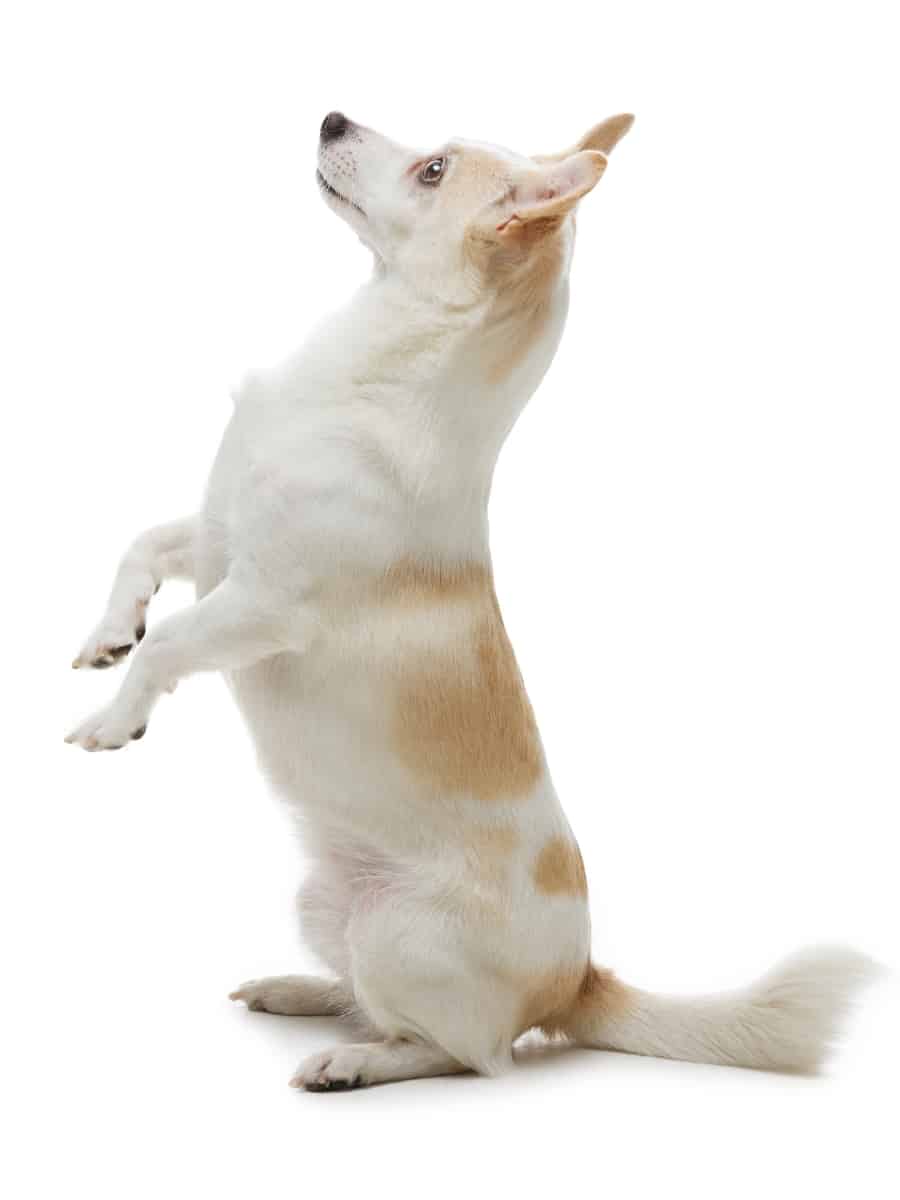
Why Is My Dog Not Chewing Food Properly?
Your furry pal is having trouble chewing their food properly. There could be a couple of reasons why this is happening. One possibility is that they have some dental issues, like a toothache or gum disease, making it hard to chew.
Another reason is that they need to eat more slowly and take the time to properly chew their food before swallowing. If your pup is not chewing its food properly, it can lead to many issues, like choking, digestive problems, and even malnutrition.
So, getting to the bottom of this issue as soon as possible is important to keep your four-legged friend healthy and happy. You might want to try switching up their diet and offering them softer foods or adding water to their kibble to make it easier for them to chew.
So, let’s get your pup chomping their food like a champ again!
Why Does My Dog Cover His Food?
Dogs are very sophisticated creatures with complex personalities and behaviors. And one of those behaviors is covering their food. Why?
They’re just trying to hide their food from you because they know you’re always trying to steal their snacks! Just kidding, but in all seriousness, dogs are instinctive to bury their food for later, just like their wild ancestors.
So when your pup covers its food, they follow its instincts. But there’s more to it than just instinct. Sometimes, dogs cover their food to protect it from predators, even though they’re tame and safe at home.
Or, they may be trying to save it for later as a backup in case their next meal is delayed. And sometimes, it’s simply because they want to savor every last bite and enjoy their meal peacefully, without any distractions.
So, the next time you see your dog covering their food, remember they’re not sneaky or trying to hide it from you. They’re just their natural, quirky selves!
Learn More About Why Dogs Hide Their Food In This Video…
Why Won’t My Dog Eat In Front Of Me?
As a fellow dog lover, I get where you’re coming from. But don’t worry. There’s nothing wrong with your pup; they’re not trying to be difficult.
It’s a common behavior among dogs. Why won’t they chow down in front of you? Some dogs are naturally shy or anxious and may feel more comfortable eating in a private, secluded area.
They may also be easily distracted by noises or movements around them, making it difficult to focus on their food. Another hypothesis is that they’re not hungry now and saving their meal for later.
Like humans, dogs have different appetites and eating habits, and sometimes they must be in the mood for a big meal. So if your pup is avoiding their food bowl when you’re around, don’t take it personally.
It’s most likely just their instinct and behavior. On the other hand, if your dog suddenly stops eating or seems to be losing weight, it could be a sign of a more serious health issue, and you should consult your vet.
But for the most part, if your dog is healthy and happy and is just being a little picky about when and where they eat, there’s no need to worry.
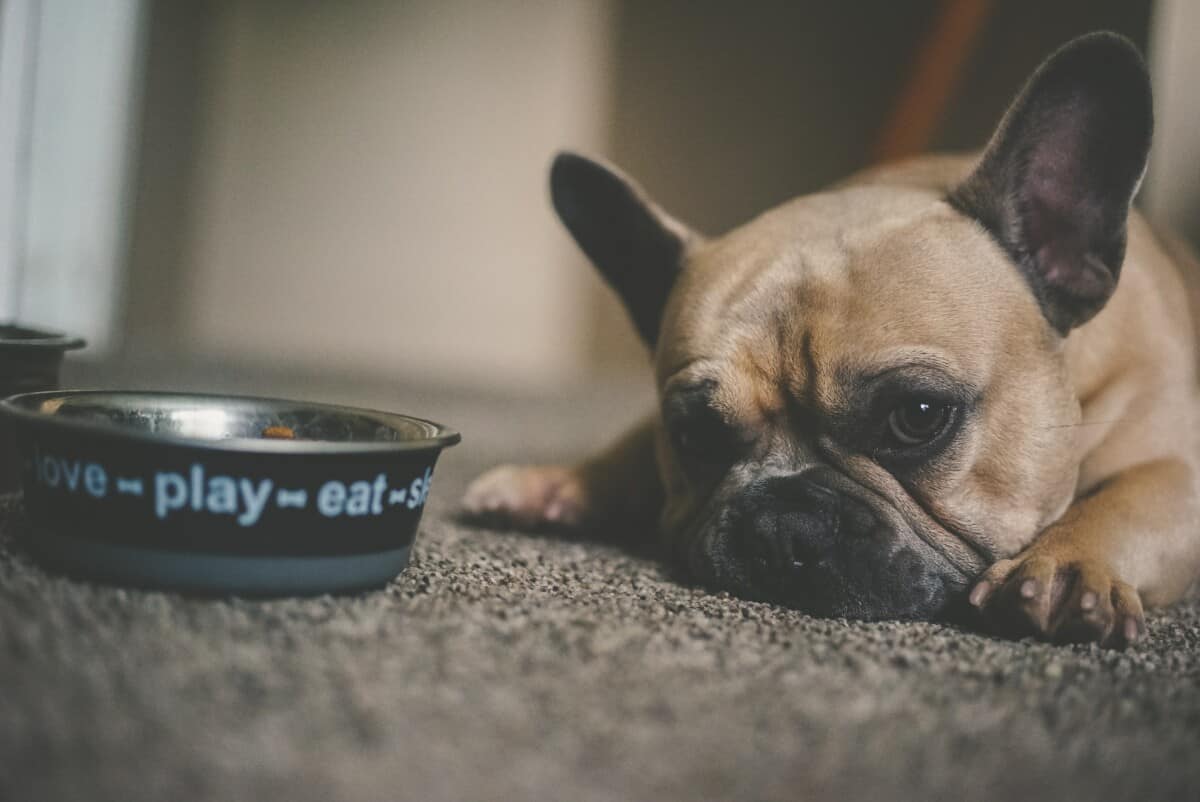
Why Won’t My Dog Eat Unless I Watch Him?
If your furry friend doesn’t eat unless you’re watching, it could signify a deep and loving bond between you. Your dog may simply feel more comfortable and secure when they know you’re nearby, and it may associate mealtime with your presence.
“I can relate to this with my dog as she will only eat if I am beside her. But she is a German Shepherd and they are renowned for having an unbreakable bond with their owner!”
World of Dogz
This behavior is most common in dogs rescued or adopted, as they may have had negative experiences with food or anxiety related to separation or abandonment.
On the other hand, it could also be a sign of separation anxiety or other underlying emotional issues. Dogs who feel anxious or stressed when left alone may use food to cope with their emotions, and they may only feel safe enough to eat when they know you’re there to protect them.
Suppose you suspect that your dog is struggling with anxiety or other emotional issues. In that case, it’s important to work with a qualified dog trainer or behaviorist to help address the root cause of their behavior.
With time, patience, and love, you can help your furry friend feel more secure and confident and enjoy mealtime without worries.
Learn More About This Strange Dog Eating Behavior In This Video…
Why Won’t My Dog Eat From My Hand?
Well, I’ve got to admit, that’s a puzzling behavior. Dogs are usually very happy to take treats from our hands, but there could be a few reasons your pup hesitates.
One possibility is that your dog may be experiencing some pain or discomfort in their mouth, making it difficult or painful to eat from your hand.
If you suspect this may be the case, having your dog checked out by a vet to rule out any dental issues or other health concerns is important.
Another theory is that your dog may not have been trained to take treats from your hand. Some dogs may have had negative experiences with people reaching toward their faces, or they may be unsure of what you’re asking them to do.
In this case, you must start slowly, using positive reinforcement techniques to encourage your dog to take treats gently from your hand.
Offer a small, tasty treat at a distance, gradually moving your hand closer as your dog becomes more comfortable.
Always be patient and gentle, and never force your dog to take a treat from your hand if they’re not ready. With time and practice, your dog may learn to love taking treats from your hand!
Read more: 8 Reasons Your Dog Might Refuse to Eat from Your Hand
Why Won’t My Dog Eat Unless I Hand Feed Him?
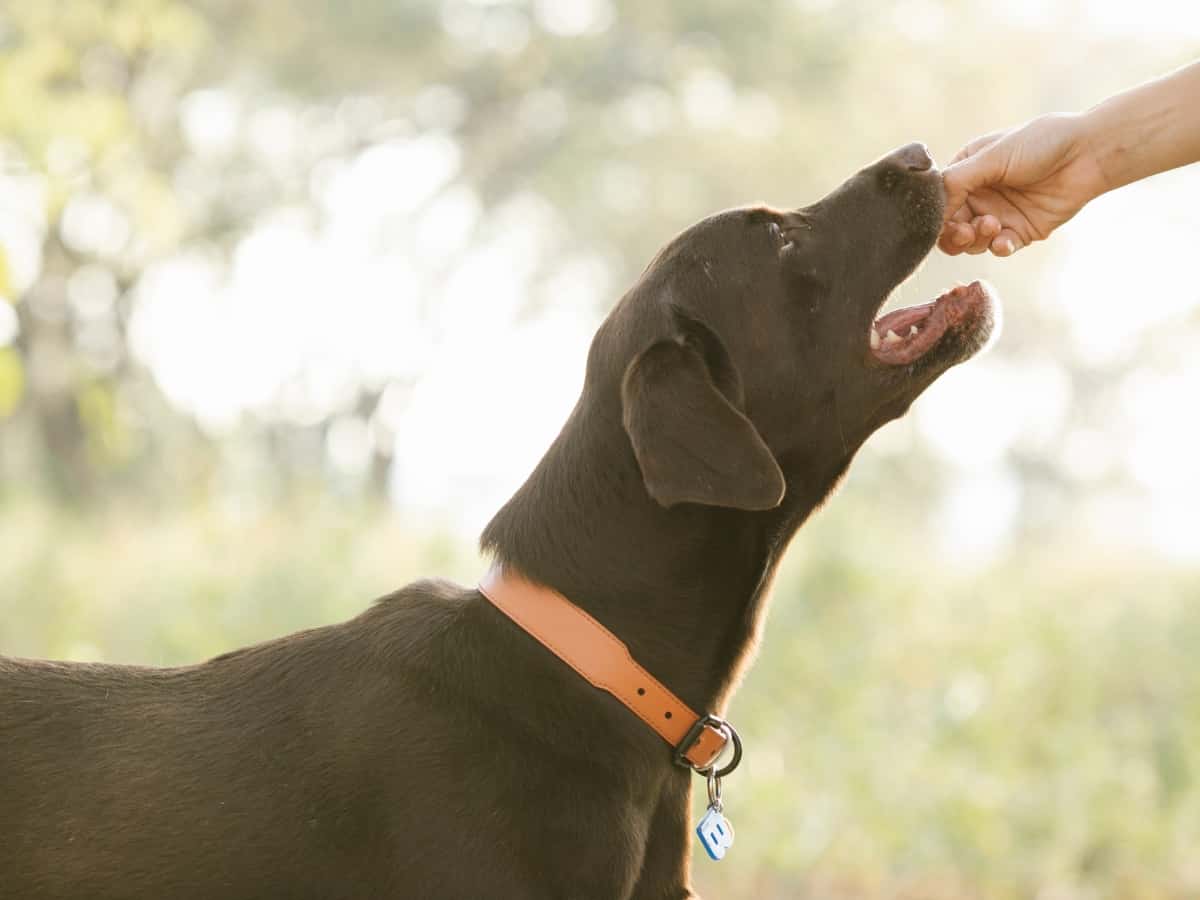
It’s not uncommon for our furry friends to have quirky eating habits, which is puzzling. If your dog doesn’t eat unless you hand-feed him, there could be a few reasons.
One hypothesis is that your dog may have developed an attachment to you, and they feel most comfortable and secure when they’re close to you. They may associate mealtime with your presence and feel anxious or uncomfortable when you don’t offer them food.
Another possibility is that your dog may be using food to get attention or affection from you. Dogs are very social animals and thrive on positive interactions with their owners.
By hand-feeding your dog, you may inadvertently reinforce this behavior, as your dog may see it as a way to get more attention and affection from you.
To help break this habit, try gradually reducing the amount of hand-feeding you do, and encourage your dog to eat from their bowl.
Use positive reinforcement techniques to reward your dog for eating independently, and offer praise and attention when they do. With time and patience, your dog may learn to enjoy mealtime alone!
Check Out This Dog’s Unusual Eating Behavior In This Video…
Why Does My Dog Eat One Kibble At A Time?
There could be several reasons why your furry friend eats one kibble at a time.
One theory is that your dog is simply being very careful and deliberate about their eating habits. They may take the time to savor each bite and enjoy their food rather than rush through their meal.
Another likelihood is that your dog may have dental issues that make eating quickly tricky. If your dog has sensitive teeth or gums, it may need to take time when eating to avoid discomfort or pain.
It’s important to have your dog’s teeth and gums checked by a vet to rule out any underlying health issues contributing to their eating habits.
If your dog is otherwise healthy and happy, there’s probably no need to worry about their slow eating habits. Just sit back and enjoy the show as your furry friend takes their time savoring every bite!
Read more: 9 Reasons Your Dog Eats One Kibble at a Time
Why Is My Dog Scared of His Food Bowl?
Oh boy, that’s a tough one. Seeing our furry friends acting scared or anxious can be distressing, especially regarding something as essential as food.
If your dog is scared of their food bowl, there could be a few reasons. One possibility is that your dog may have had a negative experience with their food bowl.
Maybe they were scolded while eating or had a painful experience associated with their bowl. This could have led to fear or anxiety around mealtime.
Another reason is that your dog may be experiencing some sensory issues that make eating from their bowl difficult. Some dogs may be sensitive to the texture or shape of their bowl or hesitant to eat from a bowl that smells unfamiliar.
You may want to try switching to a different bowl type or adding some tasty treats to the bowl to encourage your dog to eat.
It’s also essential to create a calm and positive environment during mealtime, without loud noises or distractions that could cause anxiety. With patience and gentle encouragement, your furry friend may learn to love their food bowl once again.
Why Does My Dog Flip His Food Bowl?
It’s not uncommon for our furry friends to have some quirky habits when it comes to mealtime, and flipping their food bowl is one of them. If your dog is flipping their food bowl, there could be a few reasons.
One possibility is that your dog may be trying to tell you that they don’t like their food. Dogs can be very picky eaters, and they may refuse to eat from a bowl they don’t like or don’t have the right food.
By flipping their bowl, your dog may be trying to communicate their displeasure with you. Another hypothesis is that your dog may be playing with their food bowl. Dogs are playful creatures, and they may see their bowl as a toy to play with.
By flipping it over, they may be trying to see what happens, or they may be trying to get your attention. To discourage this behavior, try offering your dog a variety of toys and playthings to keep them occupied.
You may also want to consider feeding your dog from a different type of bowl, such as a heavy ceramic or metal bowl, that is less likely to be flipped over.
With a little patience and gentle encouragement, you can help your furry friend learn to enjoy mealtime in a way that works for both of you.
Why Is My Dog Not Eating and Pushing His Bowl With His Nose?
It can be frustrating when our furry friends refuse to eat, especially when they start pushing their bowls around. If your dog is not eating and pushing their bowl with their nose, there could be a few reasons.
One reason is that your dog may be trying to tell you that they’re not hungry. Dogs are very good at self-regulating their food intake and may not be in the mood for a big meal.
Alternatively, your dog may be trying to get your attention for other reasons, such as wanting to play or walk. Another possibility is that your dog may not like their bowl or the food in it.
Dogs can be very picky eaters, and they may refuse to eat from a bowl they don’t like or don’t have the right food. You may want to try switching to a different bowl or offering a different type of food to encourage your dog to eat.
You may also want to try feeding your dog at a different time of day or in a different location to see if that makes a difference. You can help your furry friend learn to love mealtime again with patience and persistence.
Watch This Cute Dog’s Unusual Eating Behavior…
Why Won’t My Dog Eat Out of His Metal Bowl?
Dogs can be picky eaters sometimes, and it can be frustrating when they refuse to eat out of their metal bowl. Your dog might be reluctant to eat from a metal bowl for several reasons.
One possibility is that the bowl might be causing some discomfort or pain. For example, if your dog has sensitive teeth or gums, the metal bowl might be too cold or hard to eat comfortably.
If you suspect this might be the case, you might want to try switching to a different bowl type instead. Another chance is that your dog might be afraid of the bowl for some reason.
“Some dogs don’t like to see their reflection in a metal bowl – so switch to a ceramic or plastic bowl instead.”
World of Dogz
It’s common for dogs to develop fears or phobias around certain objects or situations, and a metal bowl might trigger some anxiety for your furry friend.
To help your dog feel more comfortable around their bowl, you might try feeding them some treats or small amounts of food from the bowl while holding it in your hand. Gradually move the bowl closer to the ground and see if your dog is willing to eat from it.
With patience and positive reinforcement, you can help your dog overcome their fear of the metal bowl and enjoy their meals again.
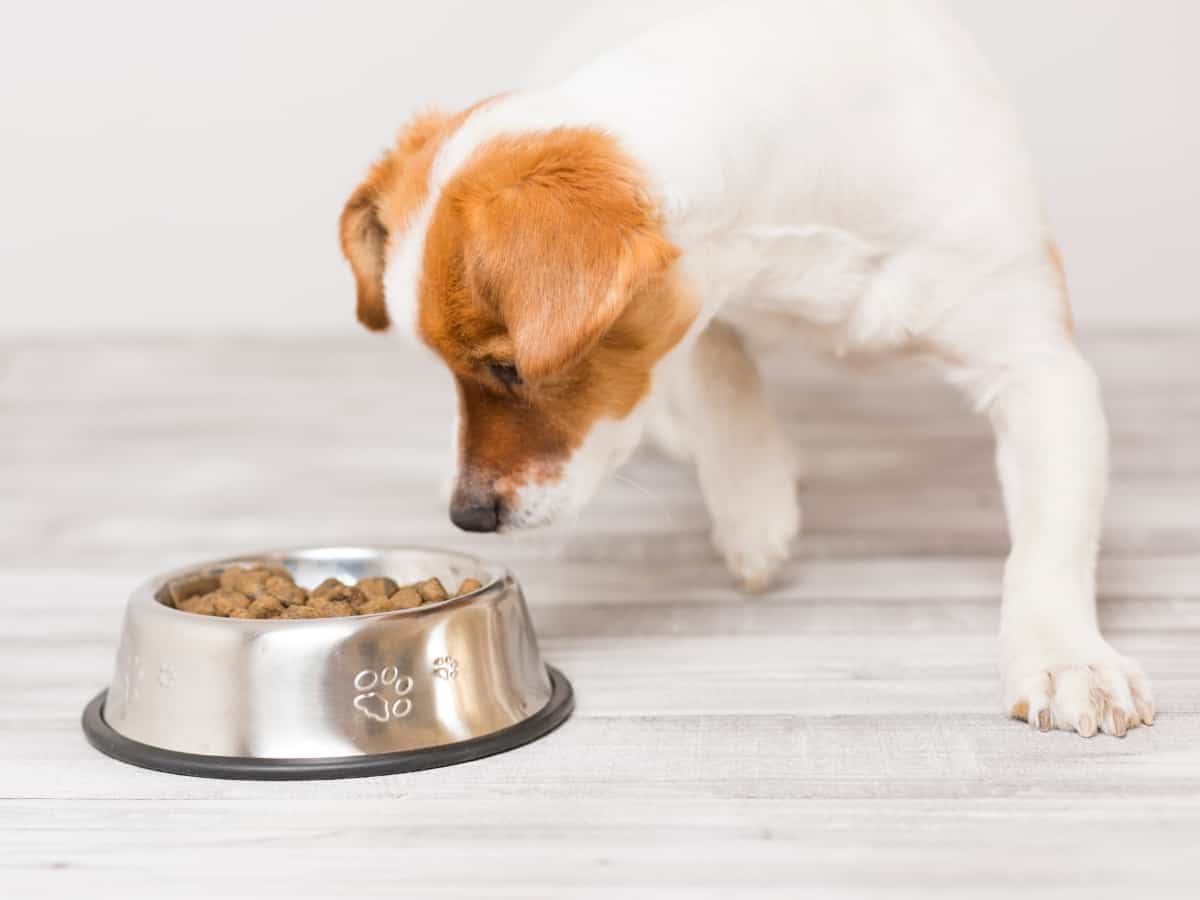
FAQs
Why Does My Dog Eat Paper And Other Non-Food Items?
Dogs are curious creatures and like to explore the world through their senses, including taste. Eating paper and other non-food items or pica can result from boredom, anxiety, or nutritional deficiencies.
If you notice your dog eating non-food items, keeping dangerous or toxic objects out of reach and monitoring their behavior closely is a necessity.
Consider increasing their physical and mental stimulation, providing safe chew toys, and speaking with your veterinarian to rule out any underlying health issues.
Is There Any Way To Cure My Dog Of Pica?
Curing a dog of pica or the habit of eating non-food items can be challenging. Still, managing and potentially eliminating the behavior with patience and consistency is possible.
The first step is to address any underlying medical conditions contributing to the behavior. Your veterinarian can help identify any nutritional deficiencies or digestive issues causing your dog to crave non-food items.
Next, providing your dog with plenty of physical and mental stimulation, including exercise, interactive play, and training, is important. You can also offer safe and appropriate chew toys to redirect their chewing behavior.
Finally, consistent supervision and managing your dog’s environment can help prevent access to non-food items, reducing the likelihood of the behavior continuing. Remember to be patient and persistent; changing your dog’s behavior can take time and effort.
What Are Some Potential Health Risks Associated With Dogs Eating Their Own Feces?
Dogs eating their feces, a behavior known as coprophagia, can pose several potential health risks.
One of the most significant risks is the potential to transmit parasites and infectious diseases. Parasites such as roundworms and hookworms can be transmitted through fecal matter, as can viruses and bacteria like parvovirus and salmonella.
In addition, ingesting feces can cause digestive issues, such as diarrhea and vomiting, and can lead to nutrient deficiencies due to the body’s inability to fully digest the fecal matter. This can also cause bad breath, as the bacteria in the feces can produce an unpleasant odor.
If your dog is exhibiting coprophagia, it’s important to consult your veterinarian to rule out any underlying health issues and develop a plan to address the behavior. This may involve training, managing the dog’s environment, and potential dietary changes.
Can Changing My Dog’s Diet Help Prevent Certain Eating Behaviors?
While changing your dog’s diet may not necessarily prevent all unusual eating behaviors, it can sometimes help.
For example, if your dog eats rocks or other non-food items due to a nutritional deficiency, switching to a higher-quality food that meets its nutritional needs may help alleviate this behavior.
Also, if your dog is eating too quickly or experiencing digestive issues, feeding them smaller, more frequent meals or switching to a different type of food may help.
It’s important to note that some dogs may have underlying medical or behavioral issues that you cannot completely resolve through diet alone. In these cases, working with your veterinarian to develop a comprehensive treatment plan that addresses all aspects of your dog’s health and well-being is important.
This may include medication, behavior modification, other interventions, and dietary changes.
Related Posts You May Like:





